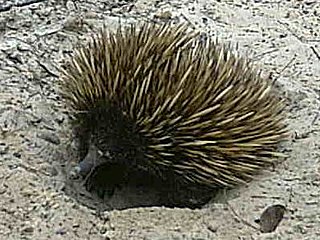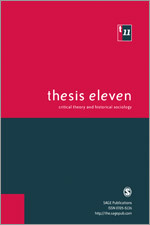Fossil Record is a biannual peer-reviewed scientific journal covering palaeontology. It was established in 1998 as the Mitteilungen aus dem Museum für Naturkunde in Berlin, Geowissenschaftliche Reihe and originally published on behalf of the Museum für Naturkunde by Wiley-VCH; since 2014 it has been published by Copernicus Publications. The editors-in-chief are Martin Aberhan, Dieter Korn, and Florian Witzmann.
A citation index is a kind of bibliographic index, an index of citations between publications, allowing the user to easily establish which later documents cite which earlier documents. A form of citation index is first found in 12th-century Hebrew religious literature. Legal citation indexes are found in the 18th century and were made popular by citators such as Shepard's Citations (1873). In 1960, Eugene Garfield's Institute for Scientific Information (ISI) introduced the first citation index for papers published in academic journals, first the Science Citation Index (SCI), and later the Social Sciences Citation Index (SSCI) and the Arts and Humanities Citation Index (AHCI). The first automated citation indexing was done by CiteSeer in 1997. Other sources for such data include Google Scholar and Elsevier's Scopus.
Scopus is Elsevier’s abstract and citation database launched in 2004. Scopus covers nearly 36,377 titles from approximately 11,678 publishers, of which 34,346 are peer-reviewed journals in top-level subject fields: life sciences, social sciences, physical sciences and health sciences. It covers three types of sources: book series, journals, and trade journals. All journals covered in the Scopus database, regardless of who they are published under, are reviewed each year to ensure high quality standards are maintained. Searches in Scopus also incorporate searches of patent databases. Scopus gives four types of quality measure for each title; those are h-Index, CiteScore, SJR and SNIP.

The Bāburnāma is the memoirs of Ẓahīr-ud-Dīn Muhammad Bābur (1483–1530), founder of the Mughal Empire and a great-great-great-grandson of Timur. It is written in the Chagatai language, known to Babur as "Turki", the spoken language of the Andijan-Timurids. During Emperor Akbar's reign, the work was completely translated to Persian, the usual literary language of the Mughal court, by a Mughal courtier, Abdul Rahīm, in AH 998 (1589–90). Translations into many other languages followed, mostly from the 19th century onwards.

ChemComm, formerly known as Journal of the Chemical Society D: Chemical Communications (1969–1971), Journal of the Chemical Society, Chemical Communications (1972–1995), is a peer-reviewed scientific journal published by the Royal Society of Chemistry. It covers all aspects of chemistry. In January 2012, the journal moved to publishing 100 issues per year. The current chair of the Editorial Board is Douglas Stephan, while the executive editor is Richard Kelly.

Mount Scopus Memorial College, commonly known as Mount Scopus College, is an independent Modern Orthodox Jewish comprehensive co-educational early learning, primary, and secondary day school, located in the Melbourne suburb of Burwood, Victoria, Australia.

Minmi is a genus of small herbivorous ankylosaurian dinosaur that lived during the early Cretaceous Period of Australia, about 119 to 113 million years ago.
The Journal of Orthomolecular Medicine was established in 1967 by Abram Hoffer. It publishes studies in nutritional and orthomolecular medicine. There is controversy surrounding the journal, as the validity of the field of orthomolecular medicine is not widely accepted by mainstream medicine. The journal is ranked in the bottom 10 percent of all journals about complementary and alternative medicine that are indexed in the bibliographic database Scopus.

The Australosphenida are a proposed infraclass of mammals within subclass Yinotheria. Today, there are only five surviving species, which live in Australia and New Guinea, but fossils have been found in Madagascar and Argentina. The surviving species consist of the platypus and four species of echidna. Contrary to other known crown mammals, they retained postdentary bones as shown by the presence of a postdentary trough. The extant members (monotremes) developed the mammalian middle ear independently.

The Victorian Naturalist is a bimonthly scientific journal covering natural history, especially of Australia. It is published by the Field Naturalists Club of Victoria and is received as part of the membership subscription of that club. From 1881, club proceedings and papers had been published in the Southern Science Record and Magazine of Natural History before the first issue of The Victorian Naturalist appeared in January 1884. The journal publishes peer-reviewed research articles, research reports, "Naturalist Notes", and book reviews. The journal was published monthly until 1976, since then it has been published bimonthly. In that period several special issues have been published. These covered particular natural history topics or significant centenaries: of the club (1980), the death of Ferdinand von Mueller (1996), and the establishment of Wilsons Promontory National Park and Mount Buffalo National Park (1998). In 2001 there was a special issue on Frederick McCoy, the first president of the club. The journal was abstracted and indexed by Scopus in 1980 and 1984 and from 2008 to 2014.

African Invertebrates is a peer-reviewed open access scientific journal that covers the taxonomy, systematics, biogeography, ecology, conservation, and palaeontology of Afrotropical invertebrates, whether terrestrial, freshwater, or marine. It is published by Pensoft Publishers on behalf of the KwaZulu-Natal Museum and the editor-in-chief is David G. Herbert.
John S. Clark was a Scottish-born Australian entomologist and myrmecologist known for his study of Australian ants. Born in Glasgow, he developed an interest in entomology at a young age. Clark first arrived in Australia in 1905 and originally worked for the state railways in Queensland. He developed an interest in ants shortly afterwards, collecting his first specimens in North Queensland. He married his first wife, Maggie Forbes in 1908, bearing four children, until her death in 1935. He married his second wife, Phyllis Marjorie Claringbulls in 1939 and had two daughters with her until she committed suicide in 1943. As a result, Clark sent his daughters to an orphanage.

Solar Physics is a peer-reviewed scientific journal published approximately monthly by Springer Science+Business Media. The editors-in-chief are Lidia van Driel-Gesztelyi, John Leibacher (National Solar Observatory, and Institut d'Astrophysique Spatiale), Cristina Mandrini (Universidad de Buenos Aires), and Michael S. Wheatland.

Thesis Eleven: Critical Theory and Historical Sociology is a peer-reviewed academic journal that publishes papers four times a year in the field of Sociology. The journal's editors are Peter Beilharz, Trevor Hogan and Peter Murphy. It has been in publication since 1980 and is currently published by SAGE Publications.
Policy & Internet is a quarterly peer-reviewed academic journal published by Wiley-Blackwell on behalf of the Policy Studies Organization. The journal was established in 2009 and the editors-in-chief are Helen Margetts, Jonathan Bright, Vili Lehdonvirta, and Victoria Nash. The journal focuses on the effects of the Internet on public policy, including the ethical implications of new technologies such as social networking, platforms, and algorithms.
Zoosystematics and Evolution is a peer-reviewed open access scientific journal covering zoological systematics and evolution. It was established in 1898 as Mitteilungen aus der Zoologischen Sammlung des Museums für Naturkunde in Berlin and obtained its current title in 2008. The journal was established in 1898 and is published by Pensoft Publishers on behalf of the Museum für Naturkunde. The editor-in-chief is Matthias Glaubrecht.
Memórias do Instituto Oswaldo Cruz is a peer-reviewed open access medical journal covering parasitology, microbiology, and tropical medicine. It was established in 1909 by the Brazilian physician Oswaldo Cruz and is published by the Oswaldo Cruz Foundation (FIOCRUZ) eight times a year. The editor-in-chief is Claude Pirmez (FIOCRUZ).
Anthropologica is a biannual peer-reviewed academic journal and the official publication of the Canadian Anthropology Association, published by University of Toronto Press. It was established in 1998 and the editor-in-chief is Alexandrine Boudreault-Fournier.
Zoosystema is a peer-reviewed scientific journal published by the National Museum of Natural History, France, covering research in animal biodiversity. Specific subjects within the journal's scope include comparative, functional and evolutionary morphology, phylogeny, biogeography, taxonomy and nomenclature, among others. Zoosystema publishes articles in English and French.
Open Quaternary is a peer-reviewed open access scientific journal publishing contributions that consider the changing environment of the Quaternary as well as the development of humanity. It published with Ubiquity Press. It has four editors in chief: Victoria Herridge, Matthew Law, Hanneke Meijer, and Suzanne Pilaar Birch.








